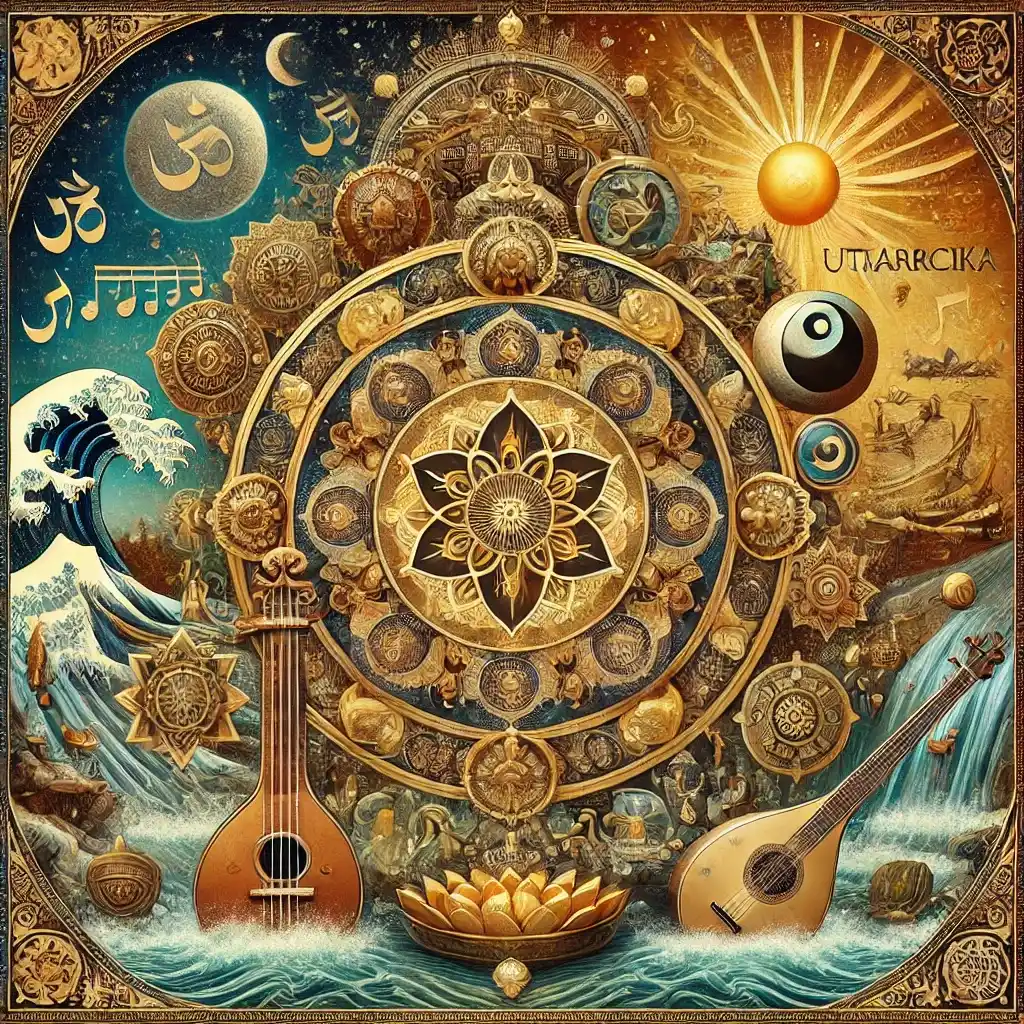
The Vedas
Understanding the Uttararcika
The Second Part of Samaveda
The Samaveda, one of the four Vedas in Hinduism, is a compilation of melodies and chants that holds a central place in the Vedic tradition. It is divided into two main sections: the Purvarcika and the Uttararcika. While the Purvarcika is well-known for its hymns and chants used in daily rituals, the Uttararcika, which forms the second part of the Samaveda, is equally important, yet it is less commonly discussed.
The Significance of Uttararcika
The term "Uttararcika" is derived from two Sanskrit words: "Uttara," meaning "later" or "subsequent," and "Rcika," meaning "hymns." The Uttararcika, therefore, refers to the later collection of hymns that follow the Purvarcika. While the Purvarcika primarily focuses on the early morning and mid-day sacrifices, the Uttararcika is associated with the evening sacrifices and the conclusion of the daily rituals.
The Uttararcika contains approximately 1,000 hymns, most of which are derived from the Rigveda, another of the four Vedas. However, the hymns in the Samaveda are set to music, and their primary purpose is for chanting during the Soma sacrifice, a key ritual in the Vedic tradition.
The Structure of Uttararcika
The Uttararcika is structured in a way that complements the Purvarcika. While the Purvarcika is organized according to the deities invoked, the Uttararcika is more focused on the rituals themselves. It is divided into several sections, each associated with a particular aspect of the Soma sacrifice.
Deity-Centric Hymns: Like the Purvarcika, the Uttararcika contains hymns dedicated to various deities. However, the deities in the Uttararcika are often those associated with the later stages of the sacrifice, such as Agni, the fire god, who is invoked to carry the offerings to the other gods.
Ritual Hymns: The Uttararcika also contains hymns that are directly related to the rituals of the Soma sacrifice. These hymns are not merely prayers, but are also instructions for the correct performance of the rituals. The precise intonation and rhythm of these hymns are crucial, as they are believed to directly influence the success of the sacrifice.
Philosophical Hymns: In addition to the ritual hymns, the Uttararcika also includes hymns that explore philosophical concepts. These hymns reflect the deeper spiritual understanding that underlies the Vedic rituals. They often ponder the nature of the universe, the gods, and the relationship between humans and the divine.
The Role of Uttararcika in Vedic Rituals
The Uttararcika plays a vital role in the performance of Vedic rituals, particularly the Soma sacrifice. The Soma sacrifice is one of the most important rituals in the Vedic tradition, involving the offering of the Soma plant, which is believed to be a source of divine energy. The hymns of the Uttararcika are chanted during the later stages of the Soma sacrifice, particularly during the evening offerings.
The chanting of the Uttararcika hymns is not merely a recitation, but a deeply spiritual act that is believed to connect the chanter with the divine. The precise intonation and rhythm of the hymns are considered to be of utmost importance, as they are believed to have a direct impact on the success of the ritual.
The Musical Aspect of Uttararcika
One of the unique features of the Samaveda, including the Uttararcika, is its emphasis on music. Unlike the other Vedas, which are primarily composed of hymns for recitation, the Samaveda is composed for singing. The hymns of the Uttararcika are set to specific melodies, and their correct performance requires not only an understanding of the words but also a mastery of the musical notes.
The musical aspect of the Uttararcika reflects the Vedic belief in the power of sound. In the Vedic tradition, sound is believed to have a direct influence on the cosmos, and the correct chanting of the hymns is believed to bring about harmony and order in the universe.
The Uttararcika in Modern Times
In modern times, the Uttararcika, like the rest of the Vedas, is studied and revered by scholars and practitioners of Hinduism. While the rituals associated with the Uttararcika are not as commonly practiced as they were in ancient times, the hymns continue to be an important part of the Vedic tradition.
The Uttararcika is also of interest to scholars of musicology, as it provides a unique insight into the musical traditions of ancient India. The melodies of the Uttararcika are among the oldest known musical compositions in the world, and they continue to be studied and performed by musicians today.
Conclusion
The Uttararcika, the second part of the Samaveda, is a collection of hymns that play a crucial role in the performance of Vedic rituals, particularly the Soma sacrifice. It is unique among the Vedas for its emphasis on music and its belief in the power of sound. While the Uttararcika may not be as well-known as the Purvarcika, it is an equally important part of the Vedic tradition, reflecting the deep spiritual and philosophical insights of ancient India.
By studying and preserving the hymns of the Uttararcika, we gain a deeper understanding of the spiritual and cultural heritage of the Vedic tradition, and the role of sound and music in the quest for the divine.

Explore the latest and most popular products available on Amazon, handpicked for your convenience! Whether you're shopping for tech gadgets, home essentials, fashion items, or something special, simply click the button below to view the product on Amazon. We’ve partnered with Amazon through their affiliate program, which means that if you make a purchase through this link, we may earn a small commission at no extra cost to you. This helps support our site and allows us to continue providing valuable content. Thank you for your support, and happy shopping!